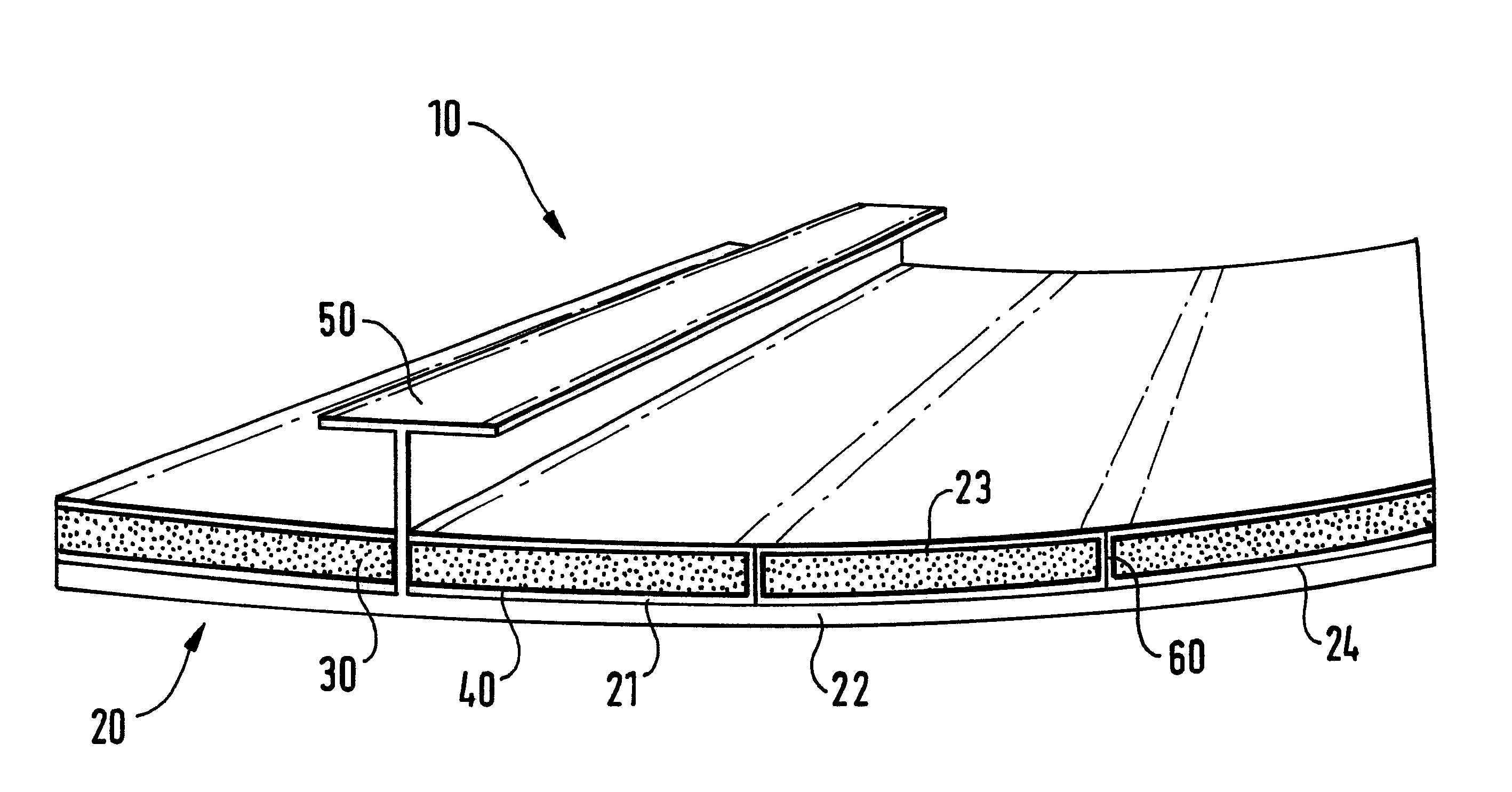Structural element of high unidirectional rigidity
a structural element and unidirectional technology, applied in sandwich constructions, transportation and packaging, spars/stringers, etc., can solve the problems of inability to provide a so-called fail-safe form of construction, limited dimensioning ability, and reduced structural variables, so as to achieve high rigidity and reduce the number of structural variables
- Summary
- Abstract
- Description
- Claims
- Application Information
AI Technical Summary
Benefits of technology
Problems solved by technology
Method used
Image
Examples
Embodiment Construction
A perspective view of a structural element 10 designed in accordance with the invention is illustrated in FIG. 1. The structural element 10 comprises a shell skin 20 in the form of a torsion shell. This is a torsion shell due to the shear laminates or torsion layers within the shell skin. Unidirectional fibre strands 30 are embedded therein. The unidirectional fibre strands themselves are encased by a sheath 40.
The shell skin 20 comprises an inner layer 21 and an outer layer 22 on its outer surface. The shell skin 20 comprises an inner layer 23 on its inner surface. A stringer 50 is folded upwardly from the inner layer 21. The stringer is T-shaped and extends along the inside of the shell skin substantially perpendicularly thereto. It serves to bind the fibre strands.
The fibre strands 30 are arranged in the sheaths 40 between the two inner layers 21 and 23 in the shell skin 20. The encased unidirectional fibre strands are in the form of so-called endless fibre strands. They have a v...
PUM
| Property | Measurement | Unit |
|---|---|---|
| angles | aaaaa | aaaaa |
| angle | aaaaa | aaaaa |
| thickness | aaaaa | aaaaa |
Abstract
Description
Claims
Application Information
 Login to View More
Login to View More - R&D
- Intellectual Property
- Life Sciences
- Materials
- Tech Scout
- Unparalleled Data Quality
- Higher Quality Content
- 60% Fewer Hallucinations
Browse by: Latest US Patents, China's latest patents, Technical Efficacy Thesaurus, Application Domain, Technology Topic, Popular Technical Reports.
© 2025 PatSnap. All rights reserved.Legal|Privacy policy|Modern Slavery Act Transparency Statement|Sitemap|About US| Contact US: help@patsnap.com



